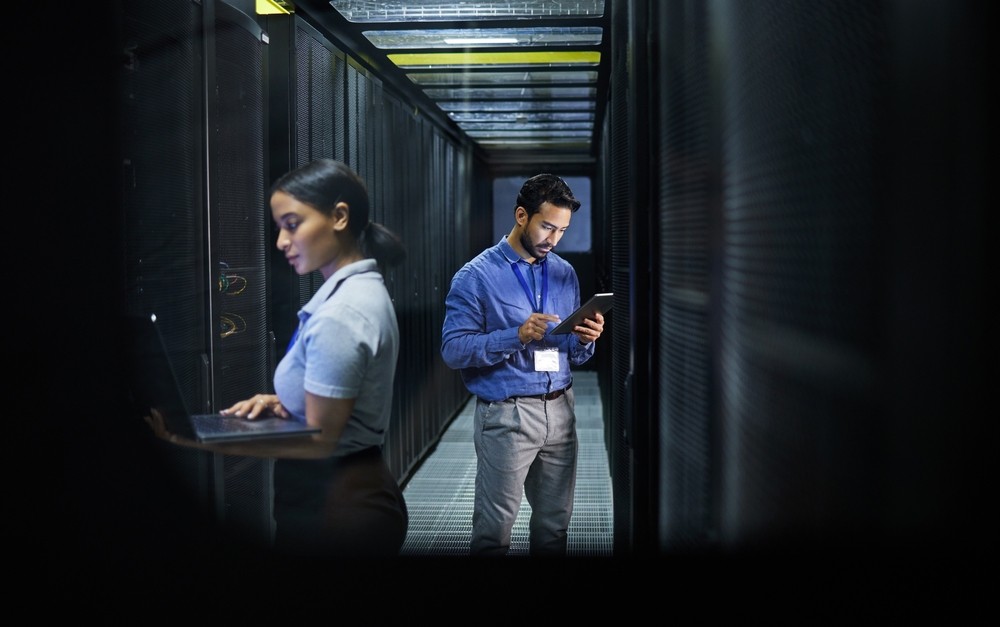Power grids keep countries ticking, generating and transporting power. However, a staggering 70% of data center facility leaders around the globe say their national power grid is being stretched to its limits. One key driver of this growing pressure is artificial intelligence (AI). As AI adoption accelerates, powering everything from drug discovery to fraud detection and autonomous assistants, the strain on the data centers that support it is becoming harder to ignore. In fact, three-quarters (74%) of data center operators report that their data center is experiencing increased demand from AI-driven workloads.
As AI reshapes industries and intensifies infrastructure demands, data centers must find ways to scale responsibly. That means reducing the load on shared energy and water resources to help safeguard national grids and the communities that depend on them.
The good news is that AI can equally empower data center leaders, too. With tools like digital twins—virtual models of physical operations—operators can better test, monitor, and fine-tune data center performance. Even better, AI-enhanced digital twins offer more predictive insights and smarter automation, helping to reduce AI’s environmental impact and boost overall efficiency. It’s ultimately a more intelligent approach that brings greater control to an increasingly complex industry.
Uncovering pain points
Before making any changes, data center operators must first determine exactly where efficiency challenges reside. Commonly, this starts with identifying stranded capacity—installed capacity in the data center that cannot be used. Imagine it’s like a game of Tetris, where data centers are playing five levels at once, trying to fit all the blocks (systems) into the data center. Operators are constantly trying to slot systems into place, often without full visibility of available capacity. As a result, the facility risks falling short of its intended performance, while inefficiencies quietly rack up costly consequences.
Currently, stranded capacity is reported as a constraint by 29% of data center operators. In addition, 60% of data center leaders say overprovisioning—allocating more resources than necessary—still occurs within their data centers. This is understandable, as they’re seeking reliability, especially during peak periods. However, it wastes energy, driving up the data center’s footprint and operational costs.
Moreover, high-density servers, which are designed to deliver exceptional performance, can become part of the overprovisioning issue if not managed correctly. Therefore, it’s crucial to ensure these systems are running efficiently, minimizing stranded capacity and avoiding over-provisioning wherever possible.
Hailed as a game-changer for data center operations, digital twins play a critical role in tackling stranded capacity and overprovisioning, ensuring resources are allocated correctly. By providing a real-time, virtual model of the data center’s infrastructure and operations, they allow operators to visualize power and space utilization with pinpoint accuracy, identifying underused systems and imbalances in workload distribution. When enhanced with AI, digital twins can go even further, using predictive insights to test how to scale operations without disruption to surrounding resources.
Keeping cool
Whilst stranded capacity and overprovisioning contribute to widespread inefficiencies, cooling is another area of potential concern. Here, data center operators should rethink legacy practices. This is where digital twins continue to come into their own. By creating simulations of the physical infrastructure with digital twins and AI, operators gain a powerful tool when planning for new and improved cooling systems. With the immense amount of energy and heat generated by AI-intensive operations, traditional air cooling is being pushed to its limits. Operators are now turning to liquid cooling, which can manage higher thermal loads more efficiently.
Currently, 45% of data center decision-makers have adopted liquid cooling, with another 19% planning to introduce it within the next year. This highlights a shift driven by increasingly dense server racks and AI workloads that exceed the thresholds of conventional systems. While air cooling handles loads up to around 20kW per rack, hybrid approaches that incorporate liquid cooling are far better suited for racks exceeding 25kW.
Similarly to visualizing power, digital twins enable operators to simulate these systems in advance. As a result, they offer visibility into variables like cooling performance, airflow, and heat recovery potential that would otherwise be a challenge. This helps identify the most effective approach for each facility’s specific environment, reducing guesswork and risk. What’s more, operators can test multiple cooling scenarios, compare performance, and make informed investment decisions all before physical implementation.
Beyond this, digital twins support innovations like waste heat recovery, further contributing to sustainable operations. In this way, they’re not just tools for optimization, they’re enablers of more responsible innovation.
The catalyst for change
Data centers are making clear strides toward operational improvement, but turning ambition into action is often difficult, as it involves highlighting existing areas of inefficiency. AI-powered digital twins are emerging as the industry’s breakthrough solution here, and 73% of operators already agree. A good starting point is to use digital twins to identify and address stranded capacity and overprovisioning, optimize existing air cooling systems, and test the impact of implementing liquid cooling. By unlocking greater visibility and control, operators can modernize and maximize the efficiency of existing infrastructure before investing in additional capacity.
Ultimately, in an industry undergoing scrutiny and accelerating demand, digital twins offer a smarter, more adaptive way forward. As data centers navigate the realities of the AI era, those that embrace this kind of intelligent, responsible innovation will be best positioned to lead the way.







